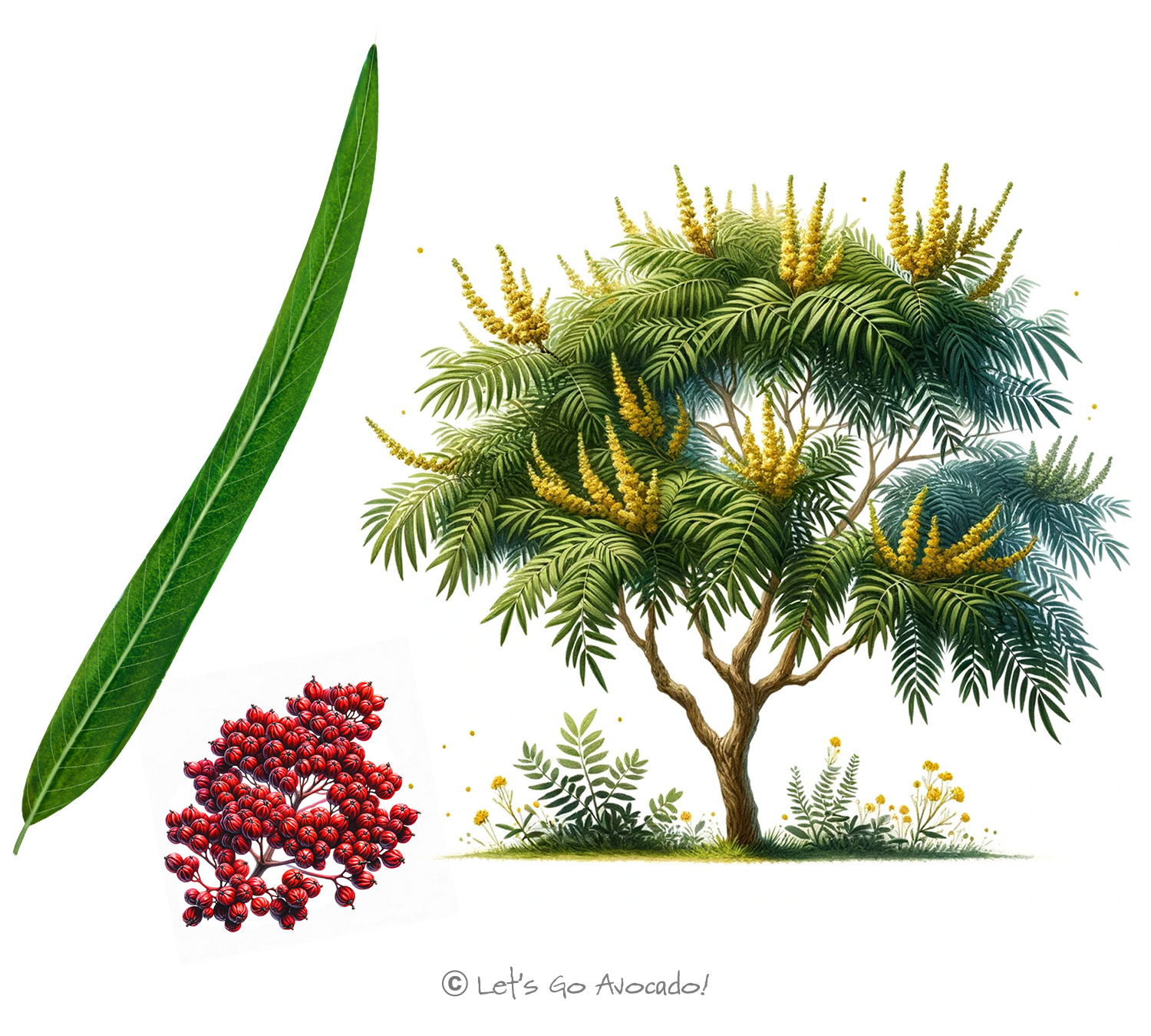The African Sumac Tree: A Resilient Marvel of Nature
Unique Identity: The African Sumac’s Distinct Traits
What sets the African Sumac apart? Firstly, its appearance: with long, slender leaves that form a dense, weeping canopy, this tree is an oasis of green in dry terrains. The leaves, a vibrant green hue, are a perfect adaptation for conserving water in hot climates. Then there are its small, inconspicuous yellowish flowers, which might not catch your eye at first but play a crucial role in the local ecosystemAn ecosystem is a community of living organisms, like insects and birds, and non-living components, like water and rocks, that interact with each other in a specific area. Learn More. The bark of the African Sumac is another distinctive feature – smooth and grey, offering a stark contrast to its leafy branches.
Stature and Growth: The African Sumac’s Mighty Presence
In terms of size, the African Sumac is a medium to large tree, typically reaching heights of 20-30 feet (6-9 meters), but it can grow taller in ideal conditions. Its wide, spreading branches create a canopy that stretches broadly, providing much-needed shade in hot, sunny environments. The growth of the African Sumac is a clear indicator of its adaptability and resilience, thriving where other trees may falter.
Life Cycle: The Rhythm of Survival
The African Sumac’s lifecycle is a fascinating one. During its blooming period, the tree’s flowers attract bees and other pollinators, essential for the continuation of its species. The fruits, small and appealing to birds, are a vital food source and a means of seed dispersal. These seeds travel far and wide, giving birth to new trees and continuing the cycle of life.
Role in the Ecosystem: More Than Just a Tree
In its native habitat, the African Sumac is a cornerstone of the ecosystem. It provides crucial shade for smaller plants and a habitat for countless insects and birds. The tree’s deep root system is key in stabilizing soil, preventing erosion in areas that are often subject to harsh weather conditions. It’s a tree that doesn’t just survive; it supports life around it.
Challenges and Adaptation: The Resilient Species
Despite its hardy nature, the African Sumac faces challenges like any other living organism. Pests and diseases are constant threats, but the tree’s natural resilience and adaptability allow it to thrive even in tough conditions. It’s a species that has learned to coexist with the challenges of its environment, making it a symbol of persistence and strength.
Human Connection: Utilitarian and Aesthetic Value
For centuries, humans have found value in the African Sumac. Its wood, durable and robust, is used for various tools and implements. In landscapes and gardens, its unique appearance and shade-providing qualities make it a popular choice. This tree is also a part of traditional medicinal practices in some cultures, showcasing its diverse utility.
The African Sumac tree is a remarkable testament to nature’s adaptability and resilience. In the face of arid conditions and challenging environments, it not only survives but flourishes, providing shelter, food, and beauty.
Keep exploring, keep learning, and you’ll find that every tree, every plant, has its own fascinating story to tell!










